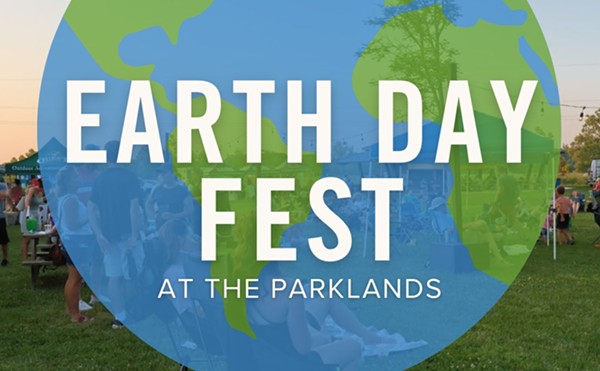The indefinite closure of a cracked Sherman Minton Bridge last Friday triggered an avalanche of criticism on the state of our roadways and projects. The snarkiest cast us as hostages of Hooterville and Third World infrastructure thanks to “Old Mitch,” “Poodle Head from Bowling Green” and “tea baggers.”
But among 200 responses posted to The Courier-Journal’s initial story, the target of choice was River Fields, the conservancy in litigation against the Federal Highway Administration to stop the East End bridge portion of the Ohio River Bridges Project.
If not for “clutching their pearls and going NIMBY, this would have been taken care of years ago,” one reader wrote.
Some called them “terrorists” and “blue-haired trout” who should be forced to commute to and from Indiana during rush hour before returning “to their idyllic estates.” Others proposed driving semis, dumptrucks, Winnebagos and hog carriers through their neighborhoods and boycotting East End businesses.
A more serious reader wrote: “I’m sorry that so many feel entitled to bash River Fields for demanding the full (environmental) inspection that the law requires in locating and designing the bridges. Also, most commenters do not reference any discussion of the long-term effects of moving a substantial part of the city’s economic activity east of the Gene Snyder Freeway.”
Another noted that “even if they broke ground on it this month, it would be years before a new bridge was completed.”
On Monday, WHAS-11 reported that some of the money allocated to the project may be used to repair the Sherman Minton — and aired this from River Fields President Lee Cory: “The project is collapsing of its own weight, and they’re trying to find a scapegoat.”
Contrary to popular myth, River Fields’ lawsuit is not delaying the project — yet. That could change if a financial plan is developed before the case is resolved — and the plaintiffs fulfill a threat to choke federal funding.
In an effort to dispose of the suit, Kentuckians for Progress, the Kentucky Transportation Cabinet and the Indiana Department of Transportation have filed motions to intervene as defendants.
The case is on hold while the FHWA prepares a yearlong update of environmental impacts triggered by the proposed $1.2 billion reduction of the original $4.1 billion project. Even at $2.9 billion, the project to build two bridges (downtown and in the east, between Prospect and Utica) and fix Spaghetti Junction remains unaffordable without tolling, a fireball of controversy.
Recently on ice: a proposed regional economic study including the impacts of bridge tolls on the area.
Bridges Authority spokeswoman Christi Lanier-Robinson tells LEO that members will look at existing data, consider the sources, “what are the missing pieces and what do we need,” at their October meeting. She would not forecast a mandate for a new study.
Southern Indiana’s No2BridgeTolls claims that tolls on the I-65 corridor would thwart cross-river mobility and commerce. Thousands of members, including small businesses and commuters to Louisville, fiercely oppose tolling for what they believe would be a disproportionate chill on “the sunny side” of the Ohio.
“It sounds like they changed their minds to not have a tolling study,” says No2BridgeTolls co-founder Paul Fetter. “That actually might be fodder for a lawsuit.”
Another controversy erupted last month, when supporters of the East End bridge learned that a public comment period widely advertised to review three alternatives (no project, the $4.1 billion project and the $2.9 billion project) was actually a review of the project’s official “purpose and need” document from 2003:
• Inefficient mobility for existing and planned growth in population and employment downtown and in the East
• Congestion on the Kennedy Bridge and within the Kennedy Interchange
• Traffic safety problems within the Kennedy Interchange and on the Kennedy Bridge and its approaches
• Inadequate cross-river transportation system linkage and freeway rerouting opportunities in the East
• Locally approved transportation plans that call for two new bridges … and the reconstruction of the Kennedy Interchange
J.C. Stites, co-founder of 8664.org, a movement that favors building an eastern bridge and replacing two miles of I-64 downtown with a parkway, urged the Federal Highway Administration to drop the fifth bullet point — and the downtown bridge.
In an Aug. 25 letter, he noted, “The nearly decade-old purpose and need remains unchanged while the project’s price tag has grown by billions of dollars, gas prices have more than doubled, traffic volumes have stagnated or declined and new, less expensive alternatives have been proposed.” He attached a cn|2 poll from August 2010 showing just over 50 percent of Louisville voters support an East End bridge; 17.3 percent support a downtown bridge; 14.5 percent want both built; and 10.1 percent don’t want either.
Noting that among roughly 1,300 public comments, only four explicitly address the purpose and need, Stites argued that 500 of the written comments saying “the project should be divided and the East End Bridge should be built clearly means that the purpose and need should be changed. It’s that simple.”
“Concerned citizens shouldn’t need legal counsel with (environmental) expertise to engage in the process and be heard,” he added.
Officials previewed the process at a May meeting of Kentuckiana’s Regional Planning and Development Agency.
The News and Tribune reported that John Sacksteder, general engineering consultant, “reiterated the bridges project will not change the purpose and need statement.” And Gary Valentine, project manager, said, “What we’re doing in this upcoming set of meetings — it’s about validation of our original decision-making process.”
Two days before Shermageddon, LEO published a prescient letter by local architect Steve Wiser: “Kentucky and Indiana’s leadership should take positive, progressive action to build local-access bridges. The debate on federal bridges can continue, but this traffic infrastructure nightmare must be resolved within the next few years, not decades.”





